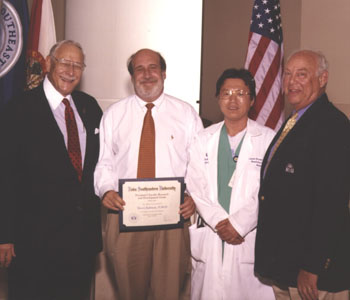The use of 3-D Sterolithographic Modeling in Craniofacial Surgery: A Clinical Feasibility Study
Grant Winners
- Steven Kaltman, DMD – College of Dental Medicine
- Takashi Koyama, Ph.D. – College of Dental Medicine
Dean
- Robert Uchin – College of Dental Medicine
Abstract

Stereolithography is a laser-aided technique for the production of three-dimensional plastic components without using any tools, dyes, or other materials. With the help of this technology, it is possible to produce models and prototypes of utmost complexity and precision from geometric computer data generated by three-dimensional computer-assisted design systems in a timely manner. These precise models allow surgeons to study the bony structures of a patient's face separate from the body and to manipulate their shapes as necessary to achieve the desired result. Models also permit a measurement of structures, the testing of osteotomies and resection techniques, and complete planning for almost all types of craniofacial surgery. Planning surgical procedures with the help of a model creates the advantage of simulating surgical conditions in an environment that closely reproduces the actual conditions.
The research objectives proposed in this study are to explore and develop knowledge of computer-aided modeling and craniofacial surgical planning. The research activities include assessment of the efficacy of rapid prototyping modeling in craniofacial surgical planning, surgical simulation and implant customization. Surgical procedures in pathology and reconstructive surgery, trauma surgery, orthognathic surgery, congenital abnormalities, and distraction osteogenesis are considered in this evaluation. In particular, the impact on specific craniofacial surgical procedures will be subjectively studied to document the value of these models.
In addition, with so much emphasis on providing quality care at lower cost in today's managed care environment, this study will independently judge the utility of models, to reduce the time needed to complete the actual procedure, decrease anesthesia time, and lower patients' risk of infection, supporting the enormous potential and advantages of modeling technology. This will help to justify the current labor requirements and cost of fabricating these models for insurance carriers.